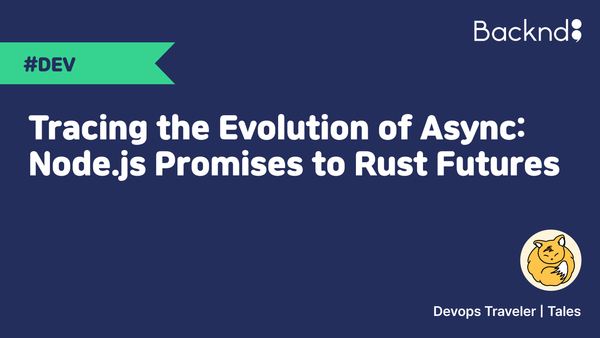Inside PlayX4 2025 Korea: B2C Highlights You Shouldn’t Miss
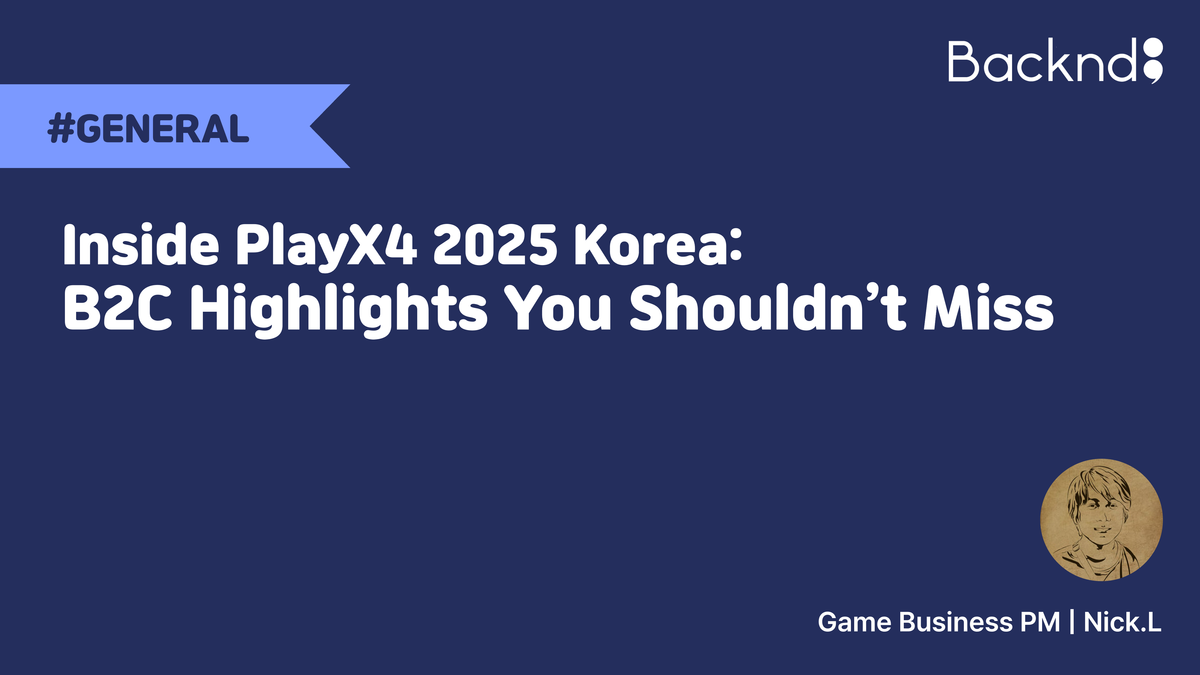
Written by Game Business PM : Nick.L, 5 June 2025
Today I’d like to share my experience visiting PlayX4 2025, held from May 22 to 25 at KINTEX in Goyang-si, South Korea
PlayX4 is one of Korea’s leading game expos, bringing together console, indie, mobile, and retro games for players to experience firsthand. I’ll walk you through some highlights of the event, including booth impressions and standout games, with photos along the way!
The recent opening of the GTX-A high-speed rail line has made it much easier to access the PlayX4 venue at KINTEX from central Seoul.
In the past, most overseas visitors would book accommodation near the venue to avoid the long commute which was about an hour by bus or subway with multiple transfers. However, the surrounding area had limited options for food and entertainment.
Now, with GTX-A, people can travel from Seoul Station to KINTEX in just 20 minutes, making it easy to stay in central Seoul and still attend the event comfortably. It's a game-changer in terms of both convenience and flexibility.

As soon as I entered the venue, I headed straight for the B2C zone.
Unlike previous years, this edition had fewer large publishers, but that meant indie games and mid-sized studios stood out even more. And they showed up in full force!
The first thing that caught everyone’s eye was, of course, Bandai Namco’s massive booth.
An imposing statue from the upcoming Little Nightmares III stood front and center, drawing people in. The immersive booth setup gave visitors a taste of the game’s eerie world and unsurprisingly, it became a popular photo spot.
Not far from there, NEOWIZ had their NEOWIZ QUEST booth showcasing a wide range of indie-focused projects, with a separate hands-on section dedicated to Brown Dust tucked behind.
Meanwhile, Supercell set up a large SUPER:PLAY area, offering merchandise and exhibitions tied to their flagship titles. The Nimble Neuron booth was equally packed, thanks in part to live Eternal Return gameplay footage being broadcast in real time, along with various social media events.
Together, these booths added a splash of big-show energy to PlayX4’s otherwise cozy and indie-friendly atmosphere.
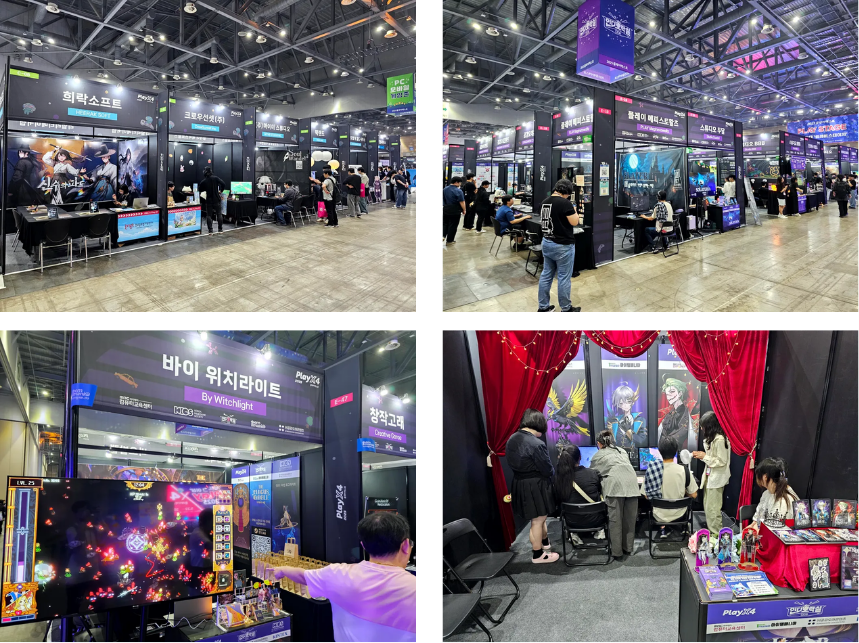
At the heart of the B2C hall, booths from indie game teams and small studios were set up in neat rows. While these weren’t flashy mega booths, each one showcased its own unique charm, thanks to consistently engaging demos and a wide range of creative concepts that easily caught visitors’ attention.
More than 50 indie and mid-sized studios had hands-on demo zones this year. In fact, the experimental design and immersive gameplay of many indie titles turned out to be even more captivating than the big-name booths. From a visitor’s perspective, it wasn’t just about watching but you could actually sit down and play, which made the experience far more rewarding.
Most booths also gave out small, delightful goodies for players who tried their games such as stickers, postcards, pin badges, acrylic keyrings, and even limited-edition prints that were only available at the event. It created a fun and interactive atmosphere that encouraged deeper engagement with each booth.
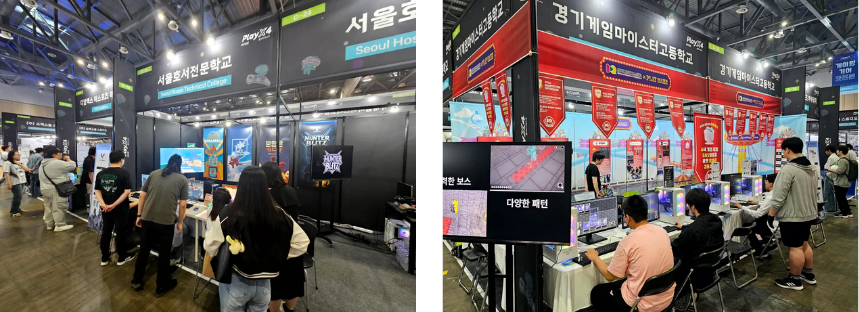
One of the most noticeable trends at this year’s PlayX4 B2C hall was the dominance of PC games.
As I walked through the booths, it was striking how many of the showcased titles whether already launched or still in development were being built primarily for PC platforms, with many developers aiming for a Steam release.
This wasn’t just the case for indie studios. Educational institutions like Seoul Hoseo Technical College, Gyeonggi Game Meister High School, Sangmyung University, and Jangan University also had student projects on display and nearly all of them were PC-first titles. In contrast, I counted only three booths focused primarily on mobile games.
It may be a sign that Korea’s indie scene which had leaned heavily toward mobile in recent years is shifting back toward PC. Whether due to the relative development flexibility or more accessible publishing pipelines via platforms like Steam, the PC route seems to be emerging as a realistic and appealing option for indie developers once again.
I’ll expand on this observation further in the upcoming B2B recap.

There were two cosplay teams at the event as well. I’m not sure which groups they were from, so I can’t give a detailed intro but they looked absolutely stunning, and I couldn’t resist snapping a few photos. 😅
There were quite a few photographers around with serious gear, so I held back a bit.
It might just be my personal impression, but since this was a Greater Seoul area event, it actually felt like there were more cosplayers here than at G-Star Busan. I’ll be sure to do a proper comparison when November, G-Star 2025 rolls around! 😄
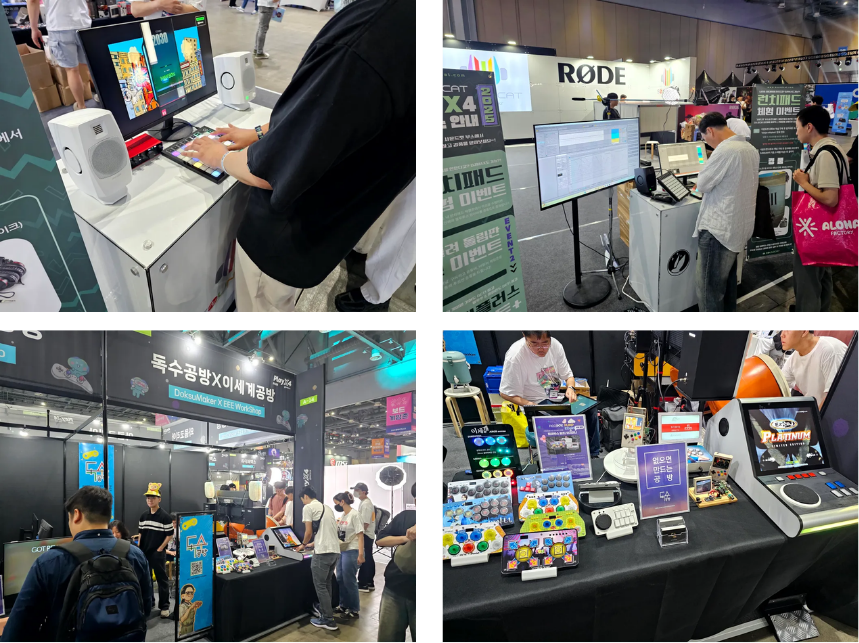
There were quite a few interactive booths where visitors could physically touch and play with the exhibits, and among them, the ones that stood out most were Soundcat and the collaborative booth by Doksu Workshop × Isegye Workshop.
At the Soundcat booth, you could try out a launchpad-style rhythm controller. It was especially impressive because it could be mapped to any rhythm game based on user preference and making it compatible with a wide variety of music games.
On the other side, the Doksu Workshop × Isegye Workshop booth operated under the motto: “If it doesn’t exist, we can make it.” They showcased a fantastic collection of DIY-style custom controllers. Every controller had its own unique button layout, color scheme, and joystick setup and which is all fully customized. The concept of creating your own ideal controller for any game was not only clever but genuinely inspiring.

One of the most distinctive features of this year’s PlayX4 was how well it transitioned from a “watch-only” exhibition to a hands-on, interactive experience. Among the most popular zones where constantly buzzing with visitors were the Board Game Zone and the Arcade Experience Hall.
The Board Game Zone showcased a wide range of titles like Intrarsia, Robinson Crusoe, and Codenames. Each table was lively, with attendees fully immersed in gameplay. A retail corner was also available, so players could purchase their favorite games on the spot. For newcomers, staff members were on hand to explain the rules, making it easy to jump right into a game.
On the opposite end of the hall, the K-ARCADE Pavilion hosted a massive arcade experience zone. Even early in the morning, long lines had already formed, showing just how popular the area was. With rows of the latest arcade games on display, the wait felt more like a natural part of the experience than an inconvenience.
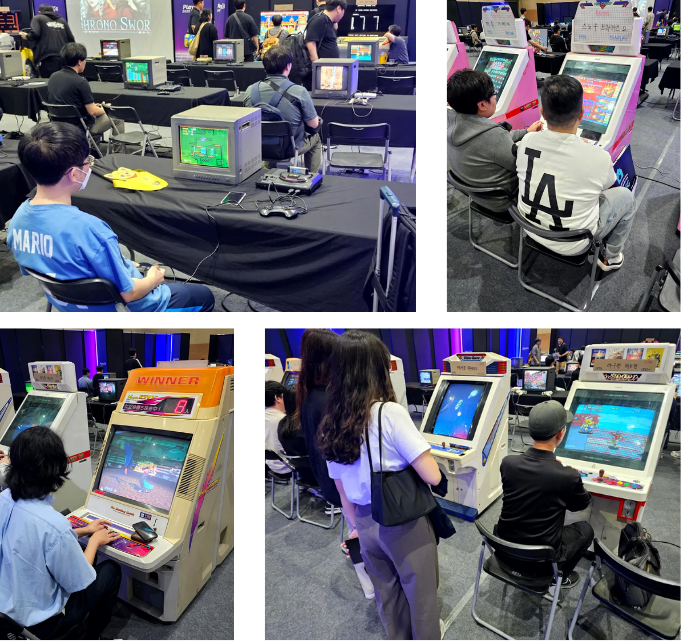
If I had to pick my favorite spot at this year’s PlayX4, it would hands down be the Retro Game Zone.
Lined with vintage arcade cabinets and classic consoles like the Famicom, Mega Drive, and Neo Geo—many labeled with handwritten paper signs just like the old days—this area was pure nostalgia. You could see it in how quickly older attendees settled into seats with a smile (myself included).
This corner has become a fan favorite, drawing visitors back every year. It offers something rare: a chance to replay the games we once dreamed of mastering in our childhood arcades, now on the original hardware.
One moment especially stuck with me. A mother walking by with her child pointed to a machine and said, “I used to play that one a lot when I was young!” It hit me then—back in the day, kids like me used to get scolded for sneaking off to arcades. But here we are now, watching parents and kids playing side by side, laughing together.
That short scene captured something bigger: how much the perception of games has evolved. Once seen as distractions, games are now part of a shared cultural experience—a bridge between generations. It was a small moment, but it said so much about how far gaming has come.
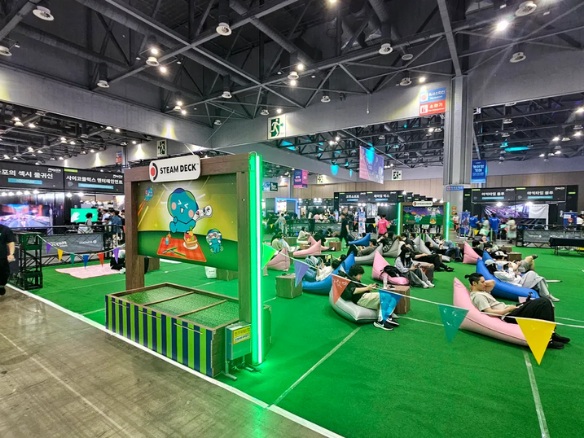
If I had to choose just one standout booth from this year’s PlayX4, it would definitely be the Steam Deck Experience Zone in the Indie Lounge.
While most booths were set up for quick, stand-up demos—or offered only brief seating that made you feel rushed—this space was entirely different. It featured grass-like flooring and cozy bean bag chairs, inviting visitors to relax and fully lounge while playing games on the Steam Deck.
It wasn’t just a product showcase—it felt like a lifestyle statement. The setup perfectly embodied the essence of what makes the Steam Deck special: gaming anytime, anywhere, in total comfort.
That atmosphere alone delivered the message more powerfully than any marketing slogan. I only meant to take a quick break, but I ended up sinking into the beanbag and playing for quite a while… and honestly? It made me want to buy one on the spot.
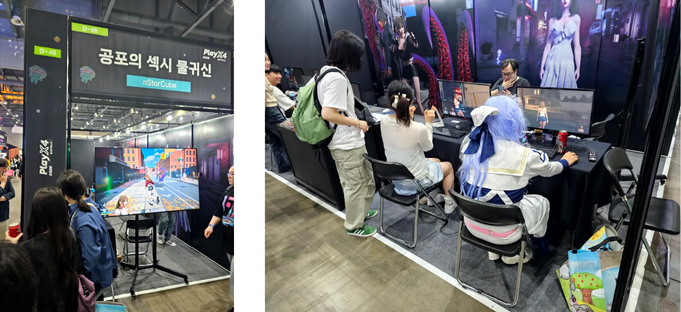
To wrap up the B2C section, the booth that truly stole the spotlight was one with the unforgettable name: "Sexy Water Ghost of Terror."
Yes, you read that right.
It was such an unexpected and hilarious title that almost everyone passing by stopped, chuckled, or burst out laughing. If the goal was to grab attention—it absolutely nailed it. 😄
Conclusion
We’ve taken you inside the B2C side of PlayX4—full of laughter, creativity, and some truly unexpected moments.
The B2C exhibition was filled with hands-on content, from a wide range of indie games to board games, arcade zones, retro zones, and custom device booths. Visitors could not only watch but also play and engage directly with the games. Thanks to the newly launched GTX-A line, the venue was more accessible than ever, making the overall experience smoother and less tiring.
👉 Now, let’s step inside the business side in our next post: Inside PlayX4 2025 Korea – B2B Highlights.
The B2B hall was alive with business meetings and meaningful networking opportunities. The FGT Zone offered a chance to test pre-release titles, and forum sessions on AI and game technology provided valuable insights into industry trends and future directions.
[Go and Check the B2B Highlithts]

© 2025 AFI, INC. All Rights Reserved. All Pictures cannot be copied without permission.

![[External Essay] Gamescom 2025 Interactions](/content/images/size/w600/2025/09/------1.png)

